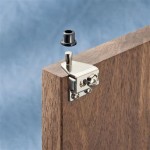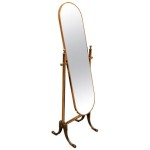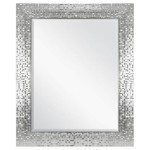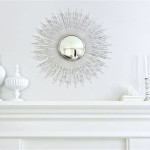Types of Mirrors and Lenses
Mirrors and lenses are fundamental optical components that manipulate light through reflection and refraction, respectively. They find applications in a vast range of fields, from simple magnifying glasses to complex telescopes and microscopes. Understanding the different types of mirrors and lenses, along with their unique properties, is crucial for harnessing their capabilities.
Mirrors
Mirrors create images by reflecting light rays. They are categorized based on the shape of their reflecting surface. The key types are plane, concave, and convex mirrors.
Plane Mirrors: These mirrors possess a flat reflective surface. Incident light rays striking a plane mirror reflect at an angle equal to the angle of incidence. The resulting image is virtual, upright, and the same size as the object. Plane mirrors are commonly used in everyday life, such as in bathrooms and dressing rooms.
Concave Mirrors: Concave mirrors have a reflecting surface that curves inward, resembling a portion of a sphere. They can produce both real and virtual images, depending on the object's distance from the mirror. When the object is placed beyond the focal point, a real, inverted image is formed. If the object is located between the focal point and the mirror, the image is virtual, upright, and magnified. Concave mirrors are utilized in reflecting telescopes and shaving mirrors.
Convex Mirrors: Convex mirrors have a reflecting surface that curves outward. They always produce virtual, upright, and diminished images, regardless of the object's position. The field of view of a convex mirror is wider than that of a plane mirror, making them useful for security purposes, such as in stores and on vehicles to eliminate blind spots.
Lenses
Lenses utilize refraction, the bending of light as it passes from one medium to another, to form images. They are typically made of transparent materials like glass or plastic. Lenses are classified as either convex or concave based on their shape.
Convex Lenses: Also known as converging lenses, convex lenses are thicker in the middle than at the edges. They converge parallel rays of light to a single point called the focal point. Convex lenses can produce real or virtual images depending on the object’s location relative to the focal point. When the object is placed beyond the focal point, a real, inverted image is formed. If the object is located between the focal point and the lens, the image is virtual, upright, and magnified. Applications of convex lenses include magnifying glasses, cameras, and eyeglasses for correcting farsightedness (hyperopia).
Concave Lenses: Also known as diverging lenses, concave lenses are thinner in the middle than at the edges. They diverge parallel rays of light. The focal point of a concave lens is the point from which the diverging rays appear to originate. Concave lenses always produce virtual, upright, and diminished images, regardless of the object's position. They are used in eyeglasses to correct nearsightedness (myopia) and in some telescopes to widen the field of view.
Key Terms in Mirrors and Lenses
Understanding the following terms is essential for a comprehensive understanding of mirrors and lenses:
Focal Point: The point where parallel rays of light converge after passing through a convex lens or the point from which diverging rays appear to originate after passing through a concave lens/reflecting from a concave mirror.
Focal Length: The distance between the center of a lens or mirror and its focal point.
Principal Axis: An imaginary line passing through the center of curvature and the center of a lens or mirror.
Center of Curvature: The center of the sphere from which the mirror's surface is a part.
Radius of Curvature: The distance between the center of curvature and the mirror's surface.
Object Distance: The distance between the object and the lens or mirror.
Image Distance: The distance between the image and the lens or mirror.
Magnification: The ratio of the image height to the object height. It indicates whether the image is enlarged or diminished.
Applications of Mirrors and Lenses
Mirrors and lenses are ubiquitous in modern technology and everyday life. Some prominent examples include:
Telescopes: Utilize combinations of mirrors and lenses to gather and focus light from distant objects.
Microscopes: Employ lenses to magnify small objects, enabling detailed observation.
Cameras: Use lenses to focus light onto a sensor, capturing images.
Eyeglasses: Correct vision defects using lenses to adjust the focus of light entering the eye.
Projectors: Employ lenses to project enlarged images onto a screen.
Optical Fibers: Utilize the principle of total internal reflection to transmit light signals over long distances.
The study of mirrors and lenses forms the basis of geometrical optics, a crucial field in physics that explores the behavior of light. A thorough understanding of these optical components is vital for advancements in diverse fields, from medical imaging to telecommunications.

Difference Between Mirror And Lens With Examples

Optical Lenses Convex Concave Mirror Theory

Light And Optics Thin Lenses Physics 299

Physics 55 1 Optics Exploring Images With Thin Lenses And Mirrors Of 20 Introduction

Optical Lenses Convex Concave Mirror Theory

Difference Between Mirror And Lens Types Important Questions

What Is The Difference Between A Mirror And Lens Avantier Inc

Types Of Mirrors And Lenses Light Reflection Refraction Just An Introduction Class 10 Ncert

Difference Between Mirror And Lens With Its Practical S In Real Life

Imp Concave Vs Convex And Reflective Mirror Refractive Lens Physics Concepts Learn Mathematics








